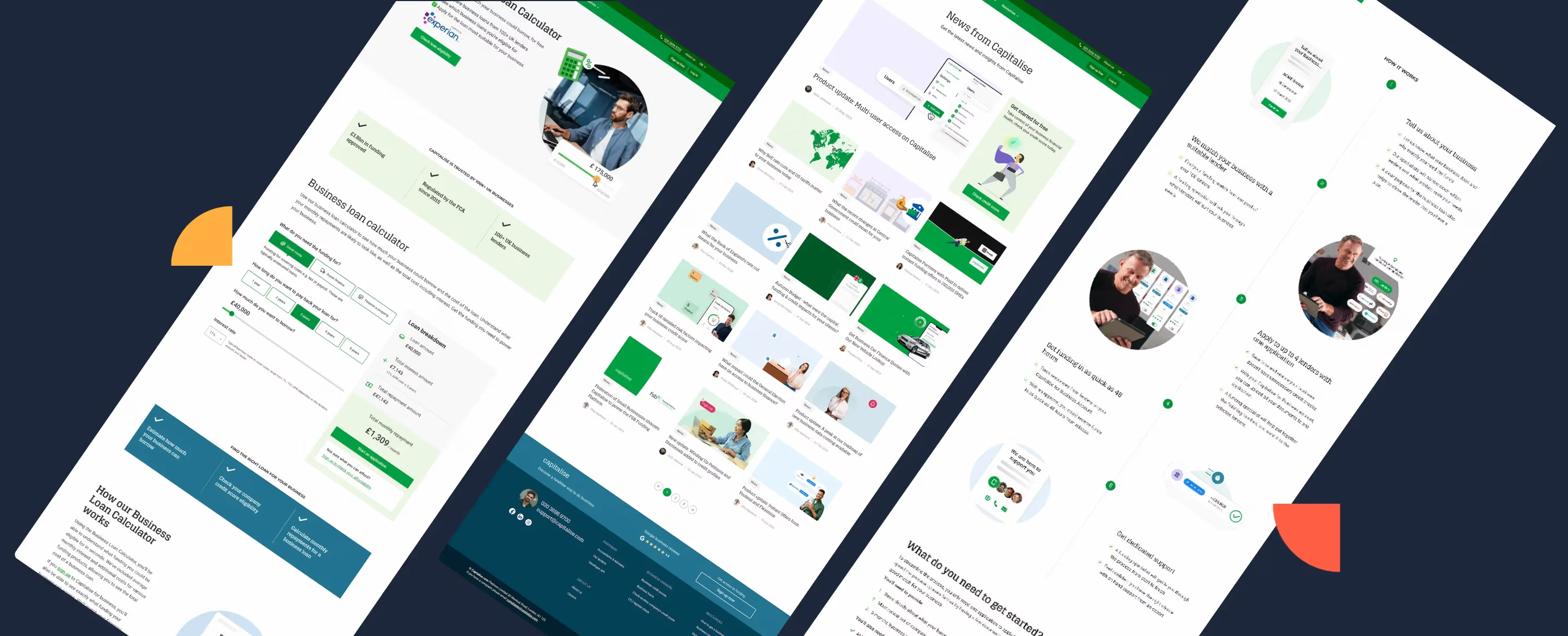- Headquarters: Växjö, Sweden
- Technology Stack: React.js & Next.js
As Sweden’s leading entrepreneurial hub, Fortnox AB (opens in a new window) works to provide businesses across every industry with the best conditions for success. But they weren’t exactly setting themselves up for the same with their previous complicated WordPress system. They needed something with a bit more oomph that could propel them towards their goals and a system that their developers and marketers actually wanted to use (not dreaded). Think fewer developer tickets and more cross-team autonomy to get things done without the headaches—here’s how they made it happen.
- Minimal Learning Curve
- Streamlined Workflows
- Faster Publication Time
The Visual Editor in Storyblok is amazing to work with as an editor or as a user. That is one of the absolute biggest upsides.
Out with the old, and in with the new
You can't build the future on WordPress. And Fortnox’s experience is a testament to why, as the team battled with their previous monolithic WordPress CMS for years before deciding to make the switch to headless. Their website performance and internal productivity were being directly impacted by their old setup, with the same roadblocks coming up time and time again, including:
- A developer-reliant workflow led to snowballing dev workloads, making it hard to launch campaigns on time and causing them to miss out on opportunities.
- The outdated and inflexible setup caused technical issues along the way, as they had to try to predict which parts of the site might be accidentally altered by edits.
- The monolithic infrastructure made it too rigid for the teams to use effectively and efficiently in the long run, leading to the publication bottlenecks many of us know all too well.
The search for a headless CMS that could deliver
The search was on. Fortnox was ready to break free from their mounting workloads and rigid workflows and move forward with a CMS built for modern demands. To find the right fit, the team brought in a consultancy firm to help navigate the options, and after reviewing a shortlist of strong contenders, one solution stood out: yep, yours truly.
So what made Storyblok stand out for Fortnox?
- A simple, powerful system to centralize all content in one place.
- An intuitive Visual Editor that made life easier for teams across the board.
- Streamlined workflows that allowed developers, editors, and designers to collaborate closely while still working independently toward shared goals.
I don’t scratch my head around Storyblok
Settling into the new system: how does headless compare?
It’s official, life’s just easier when you go headless. Fortnox now runs their main marketing website and all related content through Storyblok, some of which is fetched via API from other platforms, including:
- Product data used in the checkout process such as descriptions and images.
- Company-specific metrics are provided to users upon login.
- Curated blog articles organized by Storyblok’s tagging system.
Want some more information on Storyblok APIs? Say no more.
Another Storyblok feature that Fortnox is actively using is Content Types, which allows developers to easily provide editors with a standardized format to create pages. For example, the developer team can set up a template product page that uses the exact same component every time, and editors can then use this structure to create customized yet consistent content—the best of both worlds. The result? Faster production, less back-and-forth, and a polished, professional website every time.
It’s pretty much magic. If content editors want to do a new blog article, go ahead! Just write it and publish it. We don’t have to be involved.
Easy to learn, easy to love
Long story short, the switch to a headless CMS paid off for Fortnox and the migration and onboarding process wasn’t anywhere near as painful as you might expect. The Fortnox team were able to jump onto Storyblok with a minimal learning curve, sharing that most of their users were able to adapt to the new system simply by trying it out and exploring it for themselves. No endless documentation, formal training, or complicated processes, just easy to use, drag-and-drop content building which doesn’t require any developer assistance—the dream.
Other Case Studies
Get Started With Storyblok
Take a tour with us to see how you can build better content experiences, faster with Storyblok.








